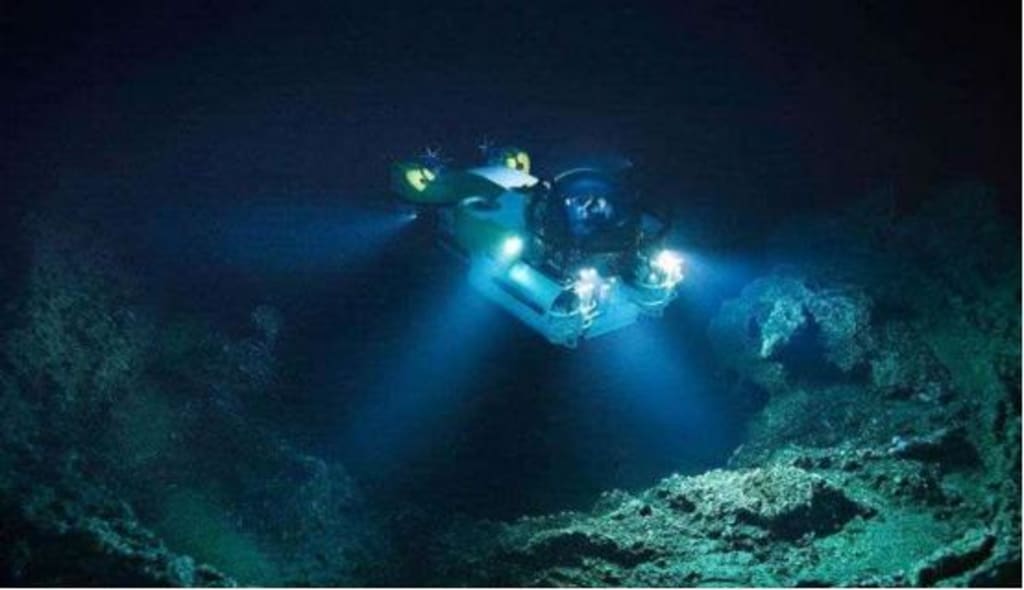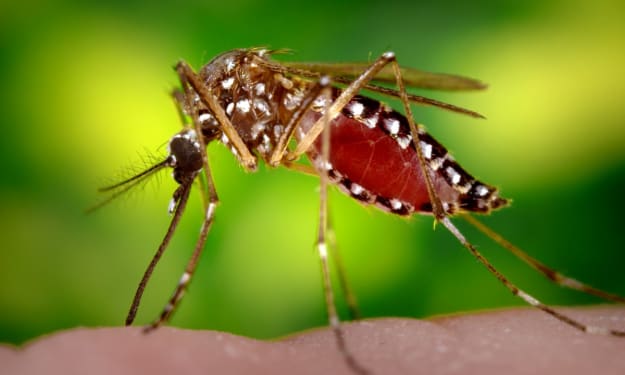Mysterious material in the Mariana Trench that shouldn't exist, scientists express concern
Mysterious Mariana Trench

In the Pacific Ocean, there is one of the deepest trenches on earth. Since humans began to study it in the early 1960s, it is still very mysterious to this day. It is 10,984 meters away from the sea, which also makes it very mysterious. It has become a challenger abyss of "no one is allowed to enter", and few people have ever been there.
Mysterious Mariana Trench
In terms of time, the formation of the Mariana Trench has a history of about 60 million years ago. Research believes that it was formed due to the subduction of plates due to geological movements.
Because it is located in the deepest part of the ocean, this makes it one of the worst places on earth. The completely dark environment, coupled with low temperature, lack of oxygen, high pressure, etc., also made the scientists who started to study the Mariana Trench, Consider this a forbidden zone for life on Earth.
However, even in such a harsh environment, the miracle of life still happens here. In 1960, scientists took a submersible to the Mariana Trench for the first time, but found that there are still many relatively complex marine life here. However, because the environment here is very harsh, the creatures are generally very small, and they all belong to small fish and shrimp.
In addition, scientists have also discovered a lot of mineral resources in the Mariana Trench. At the same time, in 2019, Chinese scientists also discovered a deep-sea garden here with a large number of corals, etc. It looks very incredible. So, is there something unnatural in the Mariana Trench?
Mysterious artifact found in Mariana Trench
With the in-depth study of the Mariana Trench, scientists have also discovered the existence of many man-made objects here, which are generally plastic waste and serious microplastic pollution.
You know, there are very few humans here, and even if humans arrive here, they are in submersibles. So, where did these man-made garbage come from?
Could it be that there really are mysterious undersea people in the ocean? You know, there has been a view for many years that there is a mysterious marine civilization in the ocean, some believe that it is the lost "Atlantis", and some believe that it evolved at the same time as humans, and it is even possible Another intelligent creature on Earth that appeared before humans.
However, this view has never been confirmed for many years. So, since the mysterious man-made garbage has been found in the Mariana Trench, will it be related to people under the sea?
Unfortunately, the answer is not positive. You must know that the man-made objects in the Mariana Trench are actually produced by human activities, although humans did not directly discharge plastic waste and various types of pollution into the Mariana Trench, However, with the activity of ocean currents, man-made pollutants will still enter the deep sea and reach every corner of the earth.
You must know that even in Antarctica, where there are no permanent residents, there is microplastic pollution. Nowadays, microplastic pollution has already invaded every corner of the earth, and it has truly penetrated into every corner, which also worries researchers.
What is microplastic pollution?
Scientists first proposed the term "microplastics" in 2004, when scientists from the University of Plymouth in the United Kingdom discovered the existence of plastic debris in marine water samples through research. Of course, these plastic debris are invisible to the naked eye. Visible, so if it is not specially researched and tested, it is actually impossible to find their existence.
When the research paper was published in the journal Nature in 2004, the term "microplastics" began to be known.
At that time, the PM2.5 pollution in the air was already well known, and in many places, it became the main source of air pollution. Therefore, microplastics are also called the PM2.5 of the ocean. Dangerous.
Generally speaking, plastic fragments and particles with a diameter of less than 5 mm belong to the category of microplastics. So, where do these microplastics come from? This needs to start more than 100 years ago.
After the Industrial Revolution, human beings entered a new era of comprehensive development of science and technology. At the end of the 19th century, a kind of shellac produced in Southeast Asia, because of its good insulating effect, became very popular in the market. Because the supply was in short supply, the price also rose.
Therefore, many chemists at that time hoped that they could develop something that could replace shellac. In the end, an American scientist succeeded. The scientist was named Parks. Through experiments, he successfully developed a lightweight and durable. Polymer compounds, this is plastic.
As a result, people soon realized the benefits of plastic, and plastic products were also popular because of their low prices. Since the middle of the last century, plastic products have been officially popularized around the world, and environmental pollution has also occurred. However, people did not realize this at the time, and instead called the emergence of plastic one of the greatest inventions of the 20th century.
In the past 70 years, according to data, nearly 10 billion tons of plastics have been produced by human beings. When the time entered the 21st century, although people began to gradually realize the harm of plastics to the environment, they still continued to use plastics, and because of With the increasing demand, the annual output of plastic is also rising.
It can be said that plastics are ubiquitous in our lives today, including polyester fibers on our clothes, which are in fact a type of plastic. For food, clothing, housing and transportation, plastics have already successfully "invaded" our lives. At the same time, they have also successfully polluted every corner of the earth, and microplastics have also appeared in our bodies.
Microplastics are accumulating in the human body
The first time scientists discovered microplastics in the human body was in 2018, when foreign scientists discovered through research that there were various microplastic particles in the feces of volunteers participating in the experiment.
Subsequently, with the deepening of research, in 2019, Japanese scientists also discovered an amazing fact that there are also a large number of microplastics in the air, and because humans cannot see them, with our Breathing, we also inhale microplastics into our bodies.
Last year, a study was even more shocking. Scientists also found the presence of microplastics in the placenta of pregnant women. At the same time, in the feeding bottle used by babies, scientists also found that during the high temperature brewing process, the Causes a large number of microplastic particles to fall off the wall of the bottle, and then enter the baby's body with drinking.
You must know that plastic water bottles are very common nowadays, which also means that in our daily life, when we use plastic bottles to drink water, in fact, it is also the process of microplastics entering the human body unknowingly.
Is it scary? However, scientists say that we can't stop these from continuing, because even breathing allows microplastics to enter the human body, not to mention the daily diet?
The researchers found that in the ocean, the most favorite soft-bodied organisms for humans are the hardest hit areas of microplastic pollution, especially in various shellfish, the content of microplastic particles is extremely high.
Of course, in other food sources, microplastic particles also exist, but in how much. This also makes many researchers worry that microplastics will continue to precipitate in the human body in the future, which will cause irreversible damage to the human body.
There is a view that microplastic particles may cause damage to the human nervous system. At the same time, it may also cause some irreversible damage to human genes. Of course, further research is needed to get the answer.
So why is plastic pollution so serious? In fact, this is all related to the fact that plastics are all polymer compounds, and they are extremely difficult to degrade.
The first generation of plastic products 100 years ago still exists today
More than 100 years have passed since the first plastic products appeared. However, the plastic waste a hundred years ago is still not degraded in the natural environment, and according to research, it will take about 300 years. to be degraded.
It can also be seen from this point that the refractory degradation of plastics is also the main cause of pollution. Generally speaking, the degradation time of plastic products is about 100 years, while slightly more advanced plastic products will take hundreds of years or even thousands of years to degrade. Because of the small size of microplastic waste, it will naturally lead to It takes longer to degrade.
Coupled with the continuous production and use of plastic products, this has also led to the accumulation of more and more plastic waste, which naturally causes irreversible damage to the environment.
Take the ocean, the hardest hit area of microplastic pollution. According to data, about 30 million tons of plastic waste enters the ocean every year, and then passes through the food chain, eventually entering the body of different organisms, and invading the human body.
In addition, according to research data, even if human beings take effective actions from now on to control the pollution of plastics to the environment, there will still be at least 710 million tons of plastic pollution in nature around 2040. This also means that it is almost impossible for humans to completely solve the problem of plastic pollution.
Today, the earth's climate and ecological environment have long been messed up due to human reasons. Human beings need to seize all the time to race against pollution. Only in this way can we make the earth's habitable period longer and make Human civilization can continue to continue on the earth. What do you think about this? Do you think humans have a way to "heal" the planet?
About the Creator
Vicky
The world is so wonderful, let's get to know the world together!
Enjoyed the story? Support the Creator.
Subscribe for free to receive all their stories in your feed. You could also pledge your support or give them a one-off tip, letting them know you appreciate their work.






Comments
There are no comments for this story
Be the first to respond and start the conversation.